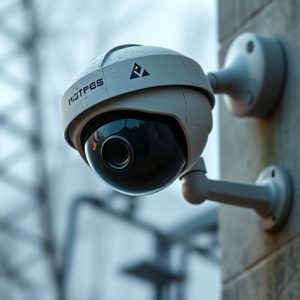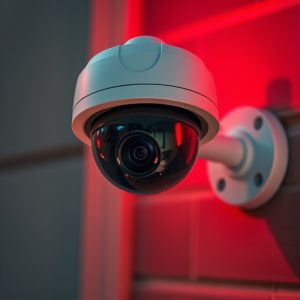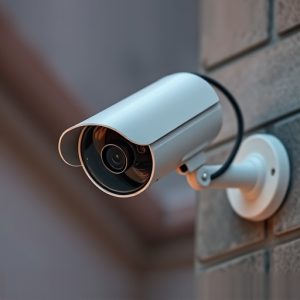Fake Cameras for Neighborhood Safety: Preventing Crime with Imitation Security Cameras
Imitation security cameras, or fake cameras, are cost-effective deterrents for neighborhood crime pr…….
Imitation security cameras, or fake cameras, are cost-effective deterrents for neighborhood crime prevention. Their realistic appearance and motion-activated lights discourage intruders without recording footage. Strategically placed in visible areas, these cameras create an authentic security presence, particularly near problem areas, reinforcing the idea of active law enforcement monitoring. However, their implementation requires careful consideration of privacy concerns, local laws, and community trust to ensure ethical use while maintaining safety and open communication.
“Enhance your neighborhood’s safety with imitation security cameras—a clever, cost-effective solution for crime deterrence. This article explores the inner workings of these fake cameras and their surprising benefits in community security. From improved visibility to psychological impact, learn how strategically placed imitation cameras can act as a powerful tool in neighborhood crime prevention.
We’ll guide you through understanding their mechanics, optimal placement techniques, and essential legal considerations, empowering you to make informed decisions for a safer community.”
- Understanding Imitation Security Cameras: How They Work
- Benefits of Using Fake Cameras for Neighborhood Crime Prevention
- Effective Placement Strategies for Maximum Impact
- Legal and Ethical Considerations: What You Need to Know
Understanding Imitation Security Cameras: How They Work
Imitation security cameras, often referred to as fake or decoy cameras, are an innovative and increasingly popular tool for neighborhood crime prevention. These devices are designed to mimic the appearance of real security cameras, but with a twist—they don’t capture any actual footage. Instead, their primary function is to deter potential criminals by giving the illusion of enhanced surveillance.
The technology behind these imitation cameras is relatively simple yet effective. They typically consist of a housing that resembles a standard security camera, complete with lights and lenses. These cameras are connected to a power source and can be mounted in strategic locations around homes or neighborhoods. When motion is detected, the fake camera’s lights flash, creating a visual deterrent. This reaction time is crucial in potentially scaring off intruders before they commit a crime. By strategically placing these decoy cameras, homeowners and community members can significantly improve safety without investing heavily in extensive security systems.
Benefits of Using Fake Cameras for Neighborhood Crime Prevention
Using fake cameras, or imitation security cameras, as part of a neighborhood watch strategy offers several compelling advantages in the fight against local crime. One of the primary benefits is their ability to deter potential criminals. By strategically placing these realistic-looking but non-functional cameras around residential areas, neighbors can send a strong message that they are vigilant and aware of any suspicious activities. This psychological factor alone can often discourage would-be offenders from targeting these neighborhoods.
Additionally, fake cameras provide an effective, low-cost alternative to traditional security systems. They offer a quick and easy way for community members to take proactive measures without the significant investment required for extensive surveillance equipment. These cameras also foster a sense of community involvement and collaboration in crime prevention efforts, encouraging neighbors to watch out for each other’s safety.
Effective Placement Strategies for Maximum Impact
Placing imitation security cameras strategically can significantly enhance neighborhood crime prevention efforts. Positioning them in visible areas like entrances, windows, and common gathering spots sends a clear message to potential criminals, deterring them from targeting your community. Additionally, ensuring these fake cameras align with real camera locations creates an even more convincing layer of security.
For maximum impact, consider the environment and local crime patterns. Place imitation cameras near known problem areas or frequently used routes. Combining this visual deterrent with actual surveillance data can further reinforce the message that law enforcement is actively monitoring the neighborhood. This multi-layered approach leverages both physical and psychological barriers to foster a safer community.
Legal and Ethical Considerations: What You Need to Know
While fake security cameras can be a seemingly straightforward solution for neighborhood crime prevention, it’s crucial to navigate legal and ethical waters before setting them up. Using imitation devices raises concerns about privacy rights and potential misuse. In many regions, recording public spaces without explicit consent is illegal, even if the camera resembles a regular security cam. Homeowners should familiarize themselves with local laws regarding surveillance technology to ensure they’re operating within legal boundaries.
Ethically, the impact on community trust is significant. Neighbors might feel uneasy knowing that half-measured or deceptive devices are monitoring their activities. Open communication and transparency about the presence of fake cameras can help foster a sense of security while respecting individual freedoms. It’s essential to consider the broader implications and aim for solutions that promote safety without compromising privacy or creating an atmosphere of distrust.
Fake cameras, strategically placed, can significantly enhance neighborhood crime prevention. By understanding their operation, leveraging their benefits, and ensuring legal compliance, these imitation security cameras offer a cost-effective and impactful solution to boost community safety. When used ethically, they serve as a powerful deterrent, contributing to a more secure living environment for all.


